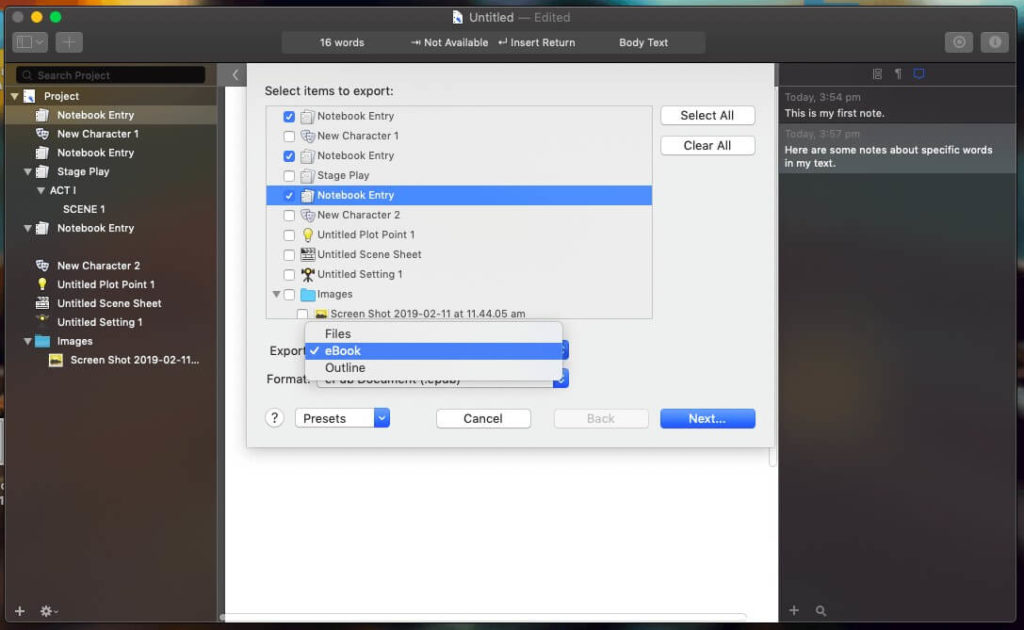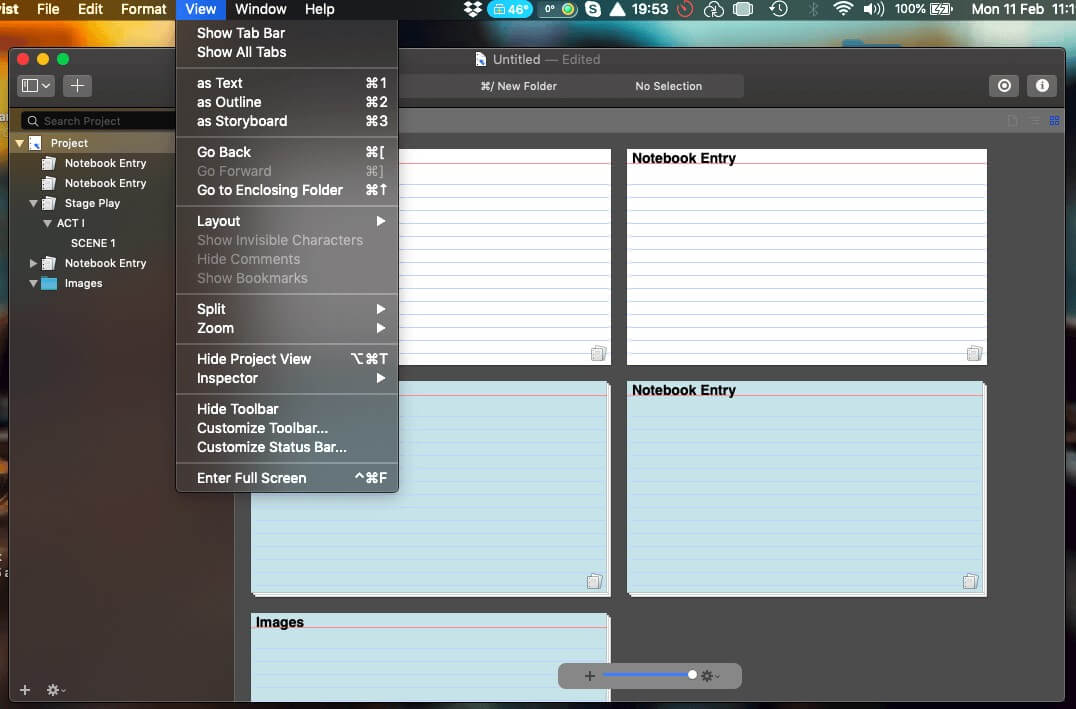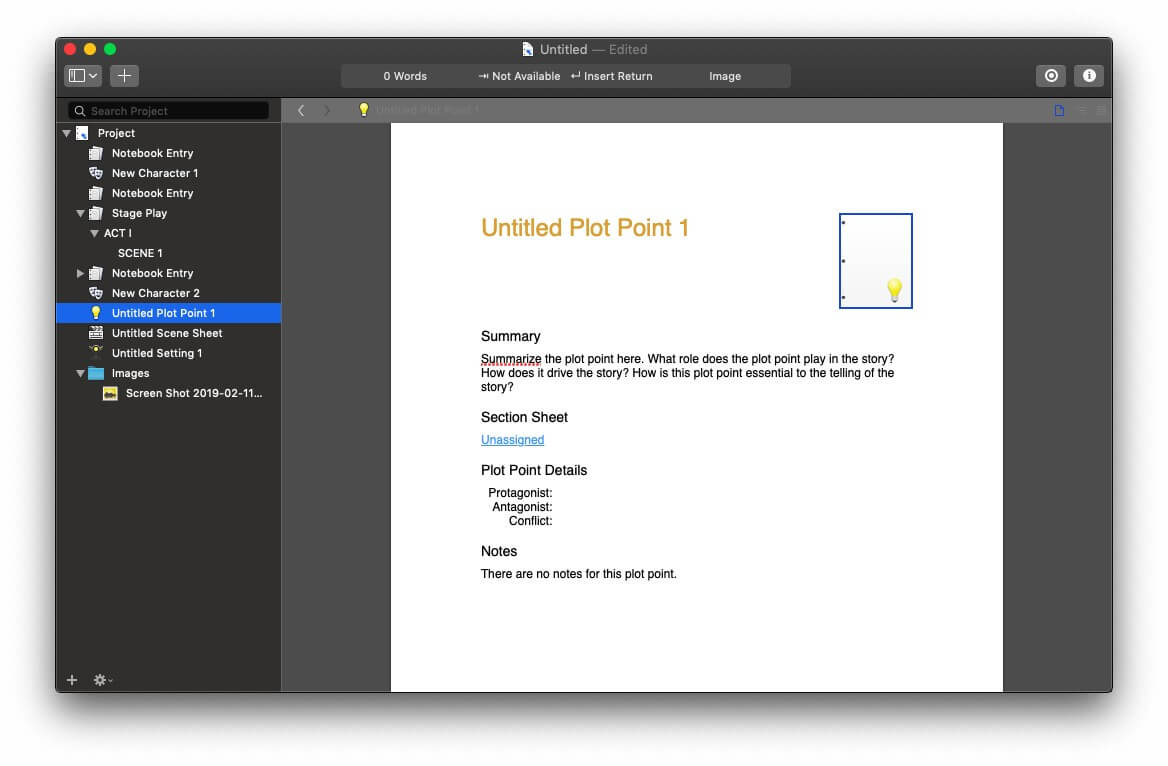
Note: although I’m using “NOVEL” in these examples, that’s just a placeholder. Choose a format that works for you and apply it consistently. The next step is to make sure all those notes follow the same titling method, so you’ll always know which note is which.įor chapters, I like the format “ Chapter 01: Chapter Title.”įor characters, I’ll use a title like “ Character: Angelica de Rothburg.” For research, I use “ Research: Useful Arabic Phrases,” and so on. Of course, you’ll also have dozens of notes for research (I recommend one note per topic), character sheets, settings, and story planning. If I feel compelled to cut a scene, I like to keep it handy, just in case.
Deleted scenes: Sometimes I can’t stop myself from editing while drafting. This step helps me write a tighter ending and saves a lot of time once I’m ready to edit the story. Unresolved questions: I start each day by reading the previous day’s writing and note any loose threads I find. ( Psst: If you’re doing NaNoWriMo, include snippets as part of your word count!)  Snippets: This note is where I record all the random bits of dialogue and description that pop into my head during the day, even if I don’t know how I’ll eventually use them. Along with the actual chapters of the draft, I like to include a few additional notes: There are three main components to this setup:įor a novel-length project, set up a notebook exclusively for that novel. The set-up: from notebooks to tagsĮven if you’ve already started writing your story, a little time spent organizing now will pay dividends down the road. I dove into 2015’s National Novel Writing Month with Evernote open and all those other apps tucked away out of sight. Bow tie color coordination was purely coincidental.Īfter trying this system out on a couple of novelettes, I had it refined enough to think bigger. The author at NaNoWriMo’s 2014 Night of Writing Dangerously. And I never lost track of an idea, because the entire story project was always right at my fingertips. With Evernote Premium on my home laptop, work laptop, and phone, I could slip in a sentence or two wherever I was, at any time, in the app I was already using. Instead of fiddling with settings and styles for hours on end (one of my worst productivity traps), I could just write. When I no longer had to mentally switch gears to manage two different interfaces and sets of commands, my writing output accelerated. It was a bit of a risk, especially since I was on deadline for an anthology, but the experiment went better than I ever imagined. Eventually, I decided to stop riding the app merry-go-round and write a 10,000-word novelette entirely in Evernote, without switching to another platform. Each has its strengths, but I couldn’t find a system that suited me.Īs I grew more comfortable with Evernote over the years, I noticed I was using it to record an ever-expanding range of personal thoughts and work projects. Word, Scrivener, Google Docs, Ulysses… I’ve used them all.
Snippets: This note is where I record all the random bits of dialogue and description that pop into my head during the day, even if I don’t know how I’ll eventually use them. Along with the actual chapters of the draft, I like to include a few additional notes: There are three main components to this setup:įor a novel-length project, set up a notebook exclusively for that novel. The set-up: from notebooks to tagsĮven if you’ve already started writing your story, a little time spent organizing now will pay dividends down the road. I dove into 2015’s National Novel Writing Month with Evernote open and all those other apps tucked away out of sight. Bow tie color coordination was purely coincidental.Īfter trying this system out on a couple of novelettes, I had it refined enough to think bigger. The author at NaNoWriMo’s 2014 Night of Writing Dangerously. And I never lost track of an idea, because the entire story project was always right at my fingertips. With Evernote Premium on my home laptop, work laptop, and phone, I could slip in a sentence or two wherever I was, at any time, in the app I was already using. Instead of fiddling with settings and styles for hours on end (one of my worst productivity traps), I could just write. When I no longer had to mentally switch gears to manage two different interfaces and sets of commands, my writing output accelerated. It was a bit of a risk, especially since I was on deadline for an anthology, but the experiment went better than I ever imagined. Eventually, I decided to stop riding the app merry-go-round and write a 10,000-word novelette entirely in Evernote, without switching to another platform. Each has its strengths, but I couldn’t find a system that suited me.Īs I grew more comfortable with Evernote over the years, I noticed I was using it to record an ever-expanding range of personal thoughts and work projects. Word, Scrivener, Google Docs, Ulysses… I’ve used them all. 

But the writing apps seemed to change on a whim, sometimes even mid-project. I kept my brainstorming and research notes in Evernote, while composing drafts in another app. Like many writers, I used to view Evernote as just one component of a larger writing system. NaNoWriMo), the head of our marketing content team shares his method for crafting a novel entirely in Evernote.

In honor of National Novel Writing Month (a.k.a.
#Storyist vs scrivener software#
Over the past few months, we’ve highlighted some of the unique ways Evernote employees use the software they build and support-from capturing sketches to digital scrapbooking.








 0 kommentar(er)
0 kommentar(er)
